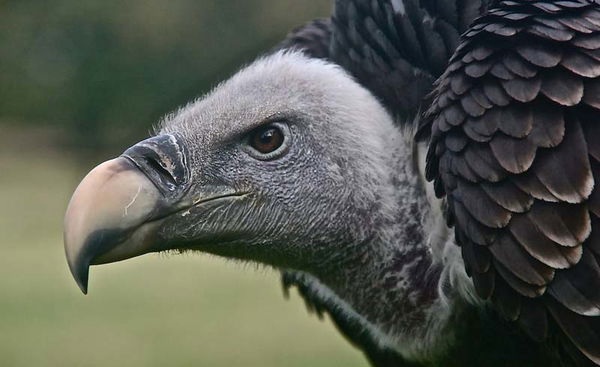Birds
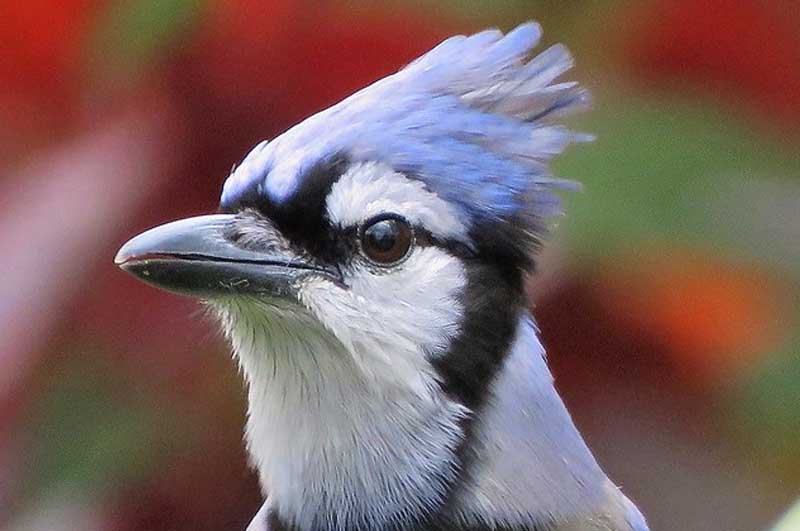
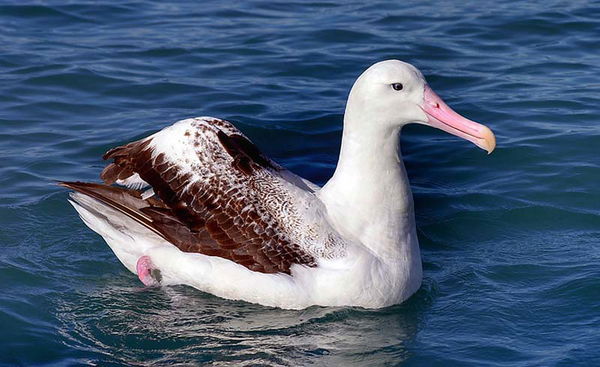
The albatross is a large and majestic seabird that is found in all regions of the world's oceans. These birds are known for their long and narrow wings, which allow them to soar long distances over the ocean with little flapping. They are powerful birds that can fly for long periods of time without rest, and some species can cover more than 10,000 miles in a single flight.
In addition to their flying abilities, albatrosses are also known for their impressive size, with some species having a wingspan of up to 11 feet. They are often white with gray feathers on the wings and back, and their diet is largely based on fish and squid. Unfortunately, many species of albatross are endangered due to overfishing and ocean pollution. Measures have been taken to protect these birds, including the creation of sanctuaries and regulation of fishing in certain areas.
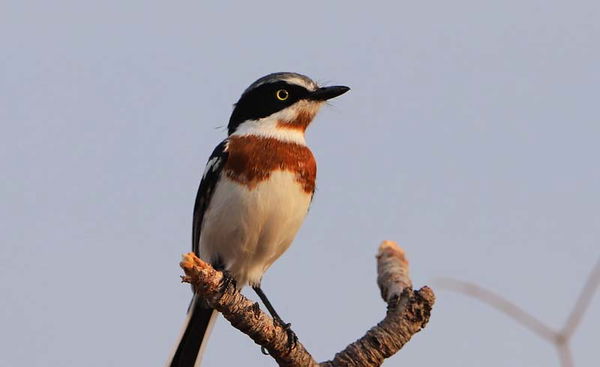
Photo: Derek Keats
The batis is a small bird found in Africa, primarily in wooded and shrubby areas. It is characterized by its compact size, vibrant plumage, and straight, short bill. Males and females have a similar appearance, although males often have brighter colors.
Despite its small size, the batis is an efficient predator. It feeds primarily on insects and spiders that it captures in flight, using its short, straight bill to catch its prey with precision.
The batis is known for its distinctive song, which varies between different species. Although it is a small bird, its song is strong and melodious.
Although the batis is not currently endangered, its habitat is threatened by deforestation and environmental degradation in some areas of Africa.
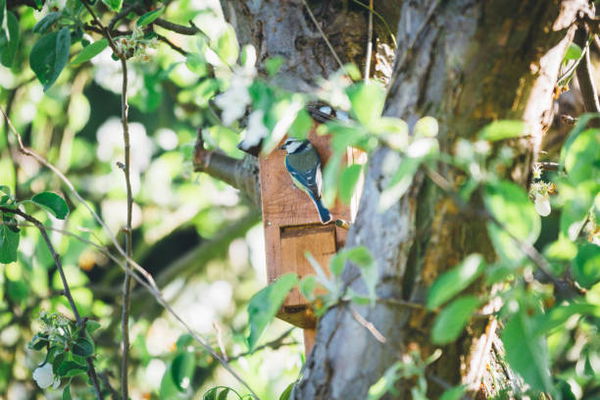
Photo: Rike_
The Ifrita is a small, colorful bird found only on the island of New Guinea. It has a distinctive plumage, with bright blue, green, and yellow feathers on its head, back, and wings. The Ifrita feeds mainly on insects and spiders, which it hunts by hopping along branches and foliage in the forest canopy. They are also known for their melodious songs, which are often heard in the early morning and late afternoon. The Ifrita is a relatively shy bird and is rarely seen outside of its forest habitat
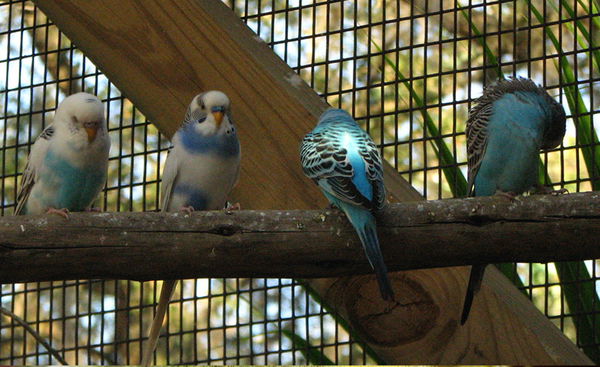
They are omnivores, feeding on a variety of seeds, fruits, and insects in the wild. In captivity, they require a balanced diet that includes fresh fruits and vegetables.
Budgies are also highly active birds that require plenty of exercise and mental stimulation to stay healthy and happy. Unfortunately, wild populations of budgies are at risk due to habitat loss and the effects of climate change. Conservation efforts are underway to protect these beloved birds and their unique habitat.
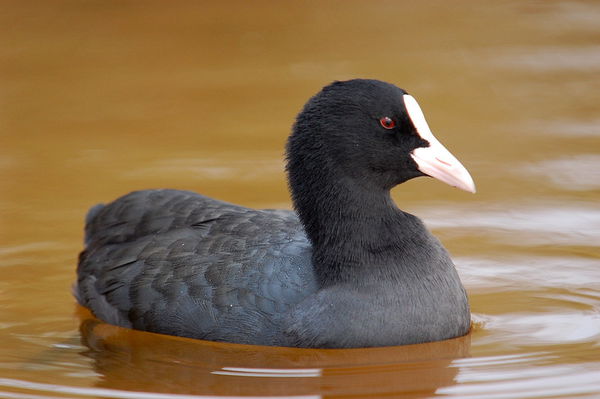
Photo: Kev Chapman
The coot is a waterbird found in wetlands and other freshwater habitats throughout much of the world. They have a distinctive appearance, with a black body, white beak, and red eyes. Coots are excellent swimmers and divers, using their large webbed feet to propel themselves through the water and their wings to fly short distances. They feed on a variety of aquatic plants and animals, including insects, snails, and small fish. Coots are also known for their aggressive behavior towards other birds, often fighting over territory or nesting sites.
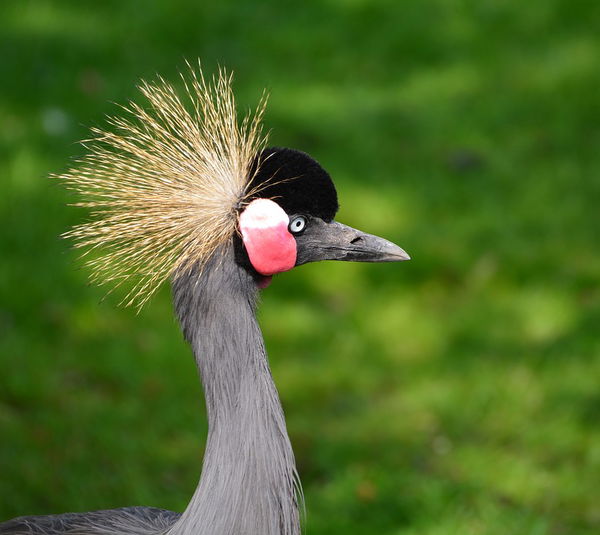
Photo: sipa
The crane is a large, graceful bird with a long, slender neck and long, slim legs. They are mostly found near wetlands and marshes, and are known for their distinctive mating dance, which involves bowing, jumping, and flapping their wings. Cranes are also known for their loud, trumpeting calls that can be heard from far away. They are omnivores, and their diet consists of plants, insects, fish, and small mammals.
Cranes are also known for their impressive migration patterns, with some species traveling thousands of miles each year between their breeding and wintering grounds. Unfortunately, cranes are also threatened by habitat loss and hunting in some parts of the world, with several species considered endangered.
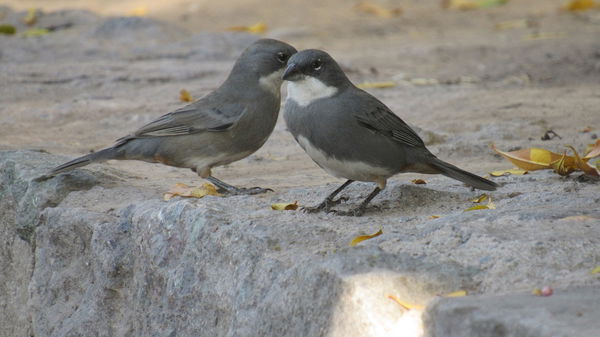
Photo: tomasromandlf
The Diuca, also known as the Chilean Warbling Finch, is a small passerine bird that is native to South America. These birds are found primarily in the Andes mountain range, but they also occur in other habitats such as forests and grasslands.
Diuca birds are known for their distinctive warbling songs, which are often heard during the breeding season. They primarily feed on seeds and insects, and they play an important role in dispersing seeds and controlling insect populations in their ecosystems.
Despite their importance, Diuca birds face threats from habitat loss and fragmentation, as well as from invasive species such as the European House Sparrow. Conservation efforts are underway to protect these birds and their habitats, including the establishment of protected areas and the promotion of sustainable land use practices.
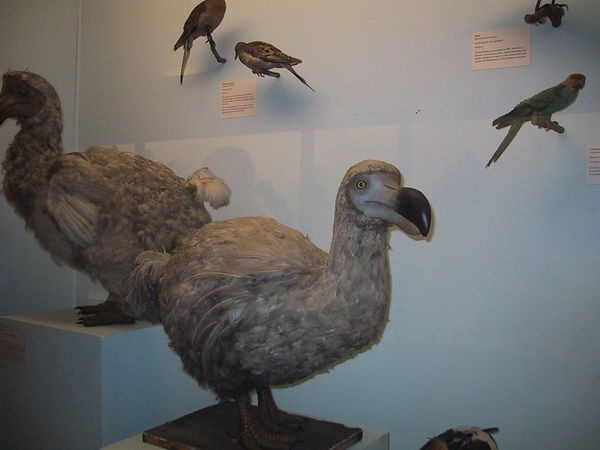
Photo: ArminFlickr
The dodo was a non-flying bird species endemic to the island of Mauritius in the Indian Ocean. The scientific name of the dodo is Raphus cucullatus, and although it is unclear how it arrived on the island, its lack of natural predators and limited island environment contributed to its evolution into a flightless bird. The species was hunted by human settlers and became extinct by the late 17th century.
The dodo was characterized by its large size, gray plumage, thick head and beak, and the lack of a crest. It was a ground-dwelling bird, feeding on fruits, seeds, and roots, and is believed to have nested on the ground. Although little is known about its behavior, historical accounts suggest it was a trusting bird and was unafraid of humans.
Although the dodo went extinct centuries ago, its image and legend have persisted in popular culture, making it a symbol of extinction caused by human activity. Its unique appearance and sad fate have made it an iconic species of wildlife that must be protected to avoid future extinctions.
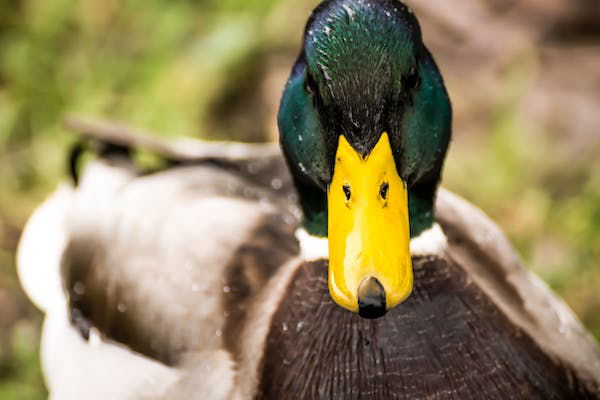
Photo: Pexels
The duck is a water bird found worldwide, especially in areas near water such as lakes, rivers, and ponds. They have a rounded body, short neck, and webbed feet that allow them to swim easily. Their feathers are waterproof and help them stay dry while swimming.
Ducks have an omnivorous diet that consists of aquatic plants, insects, and small animals. Some species migrate to warmer regions during the winter, while others stay in the same place all year round.
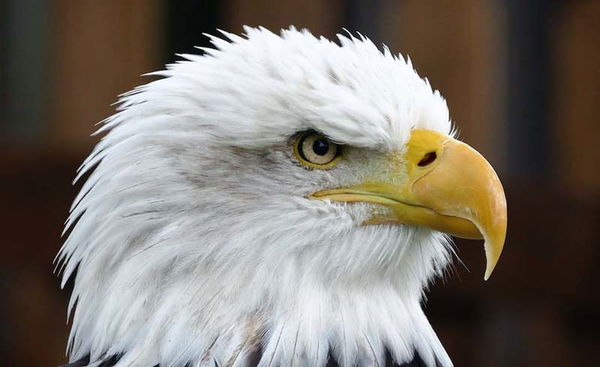
The eagle is a predatory bird found around the world, except for in Antarctica. They are known for their sharp vision and powerful claws, which allow them to capture prey in mid-flight. Eagles feed on a variety of prey, such as small mammals, reptiles, and fish, and are considered expert hunters.
In addition to being excellent hunters, eagles are symbols of strength and freedom in many cultures. These majestic birds have wide wings and a distinctive head with a strong, curved beak. Depending on the species, their plumage can range from dark brown to golden or even white.
The eagle is a fascinating animal that has been the subject of admiration and respect for centuries. It is one of the most iconic animals in the natural world and a popular figure in the culture and mythology of many societies.
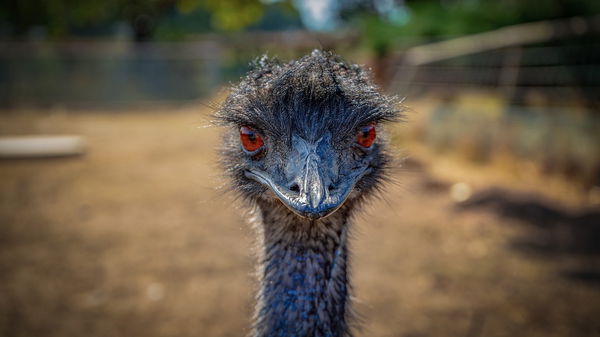
Photo: scholty1970
The emu, also known as the emu bird, is a native Australian bird that belongs to the same family as the ostrich. They are the second-largest birds in the world, after the ostrich, with a height of between 1.5 and 2 meters and can weigh up to 60 kg.
Emus have a dark brown plumage and a bare, bluish-grey head. They are flightless birds that run at speeds of up to 50 km/h. They are known for being very strong and resilient animals, and can survive in extremely dry conditions.
Emus are social animals that are often seen in large groups. They are omnivores and feed on a variety of foods, including plants, seeds, insects, and small animals. They are an important part of the culture and economy of Australian Aboriginal people and are a popular attraction for tourists visiting Australia.
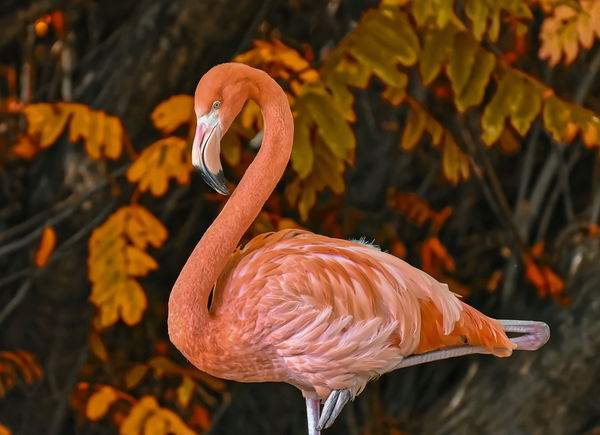
Photo: Alexas_Fotos
The flamingo is a tall, colorful bird that is easily recognized by its long legs and distinctive pink feathers. Flamingos are found in parts of Africa, Asia, the Americas, and Europe, and are known for their social behavior and impressive flocking patterns.
Flamingos are filter feeders, using their curved bills to scoop up algae and small crustaceans from shallow water. Their pink coloration comes from the pigments found in their diet of crustaceans and other small organisms.
These birds are famous for their striking courtship displays, in which they form large groups and perform synchronized dances and calls. Flamingos also make excellent parents, with both males and females taking turns incubating eggs and caring for chicks.
Despite their popularity, flamingos face threats from habitat destruction, pollution, and hunting. However, conservation efforts have helped to protect many populations, and some species of flamingo are now thriving in the wild.
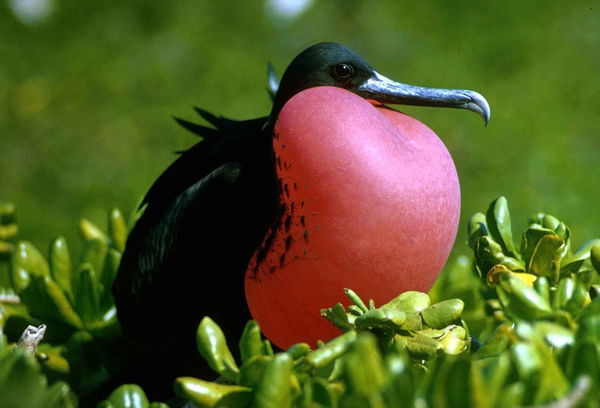
Photo: PublicDomainImages
The frigatebird, also known as the man o' war bird, is a seabird that is found in tropical and subtropical oceans around the world. They are known for their distinctive forked tail and long wingspan, which can reach up to seven feet.
Frigatebirds are excellent fliers and can stay aloft for weeks at a time, only coming down to the water's surface to catch fish or squid. They are also known for their unique hunting technique, which involves stealing food from other birds in mid-air.
Male frigatebirds are known for their bright red gular pouch, which they inflate during courtship displays to attract females. Frigatebirds are also known for their distinctive calls, which can be heard from far away.
Unfortunately, frigatebirds are threatened by habitat loss, pollution, and human disturbance. Conservation efforts are being made to protect these magnificent birds and ensure their survival in the wild.

Photo: dMz
The hummingbird, also known as a "hummer," is a small bird found primarily in the Americas. They are known for their bright, iridescent feathers and their ability to hover in mid-air, flap their wings rapidly, and fly in all directions. Hummingbirds have unique features such as long, thin bills adapted for feeding on nectar and an incredibly high metabolism that allows them to consume up to twice their body weight in nectar every day.
Hummingbirds play an important role in pollinating flowers and plants, as they feed on nectar and transfer pollen from flower to flower. They are also predators, feeding on small insects and spiders.
Hummingbirds are able to fly at incredible speeds, with some species able to reach up to 60 miles per hour. Despite their small size, they are capable of traveling long distances during their migrations, sometimes traveling over 500 miles.
Hummingbirds have a rich cultural significance in many indigenous cultures throughout the Americas, often symbolizing energy, joy, and beauty.
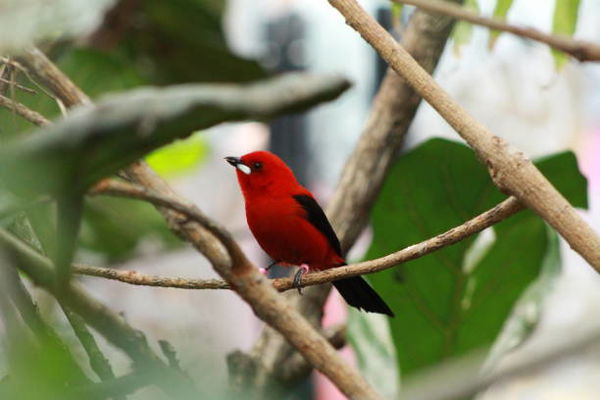
Photo: Tom Shakespeare
The I'iwi is a small, brightly colored bird native to the Hawaiian islands. It has a distinctive curved bill and bright red feathers, which are prized for their beauty. The I'iwi feeds mainly on nectar from the flowers of native Hawaiian trees, particularly the 'ohi'a lehua. They also eat insects and spiders, which they catch by probing the bark of trees and other vegetation. The I'iwi is an important cultural symbol for the Hawaiian people and is considered to be a messenger of the gods. Unfortunately, their population has been declining due to habitat loss, disease, and climate change.

Photo: 70154
The ibis is a long-legged wading bird that is found in parts of Africa, Europe, Asia, and the Americas. They are known for their distinctive curved bills, which they use to probe the mud and water for prey.
Ibises are typically found near bodies of water, such as rivers, lakes, and marshes. They feed on a variety of prey, including fish, insects, and small amphibians.
In ancient Egypt, the ibis was revered as a symbol of wisdom and was associated with the god Thoth. The sacred ibis was often mummified and buried in large numbers, and many temples featured live ibises that were fed and cared for by the priests.
Today, several species of ibis are threatened or endangered due to habitat loss and hunting. Conservation efforts are underway to protect these important and unique birds.
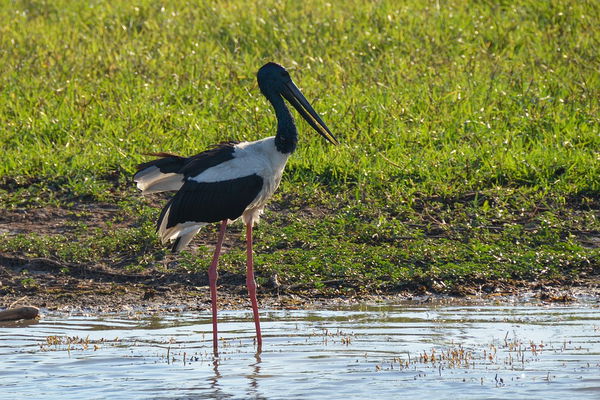
Photo: pen_ash
The jabiru is a large bird found in wetlands and savannas throughout Central and South America. It is the tallest flying bird in the Americas, standing up to 5 feet tall with a wingspan of over 8 feet.
Jabirus are easily recognized by their large, bare, red neck and bill. They have a black body with white feathers on their wings and tail. They feed on a variety of prey including fish, snakes, and amphibians, and are known for their distinctive loud, guttural calls.
Jabirus are important indicators of the health of wetland ecosystems, as they rely on these habitats for breeding and feeding. Unfortunately, their populations have declined due to habitat loss and hunting, and they are now listed as a species of conservation concern.
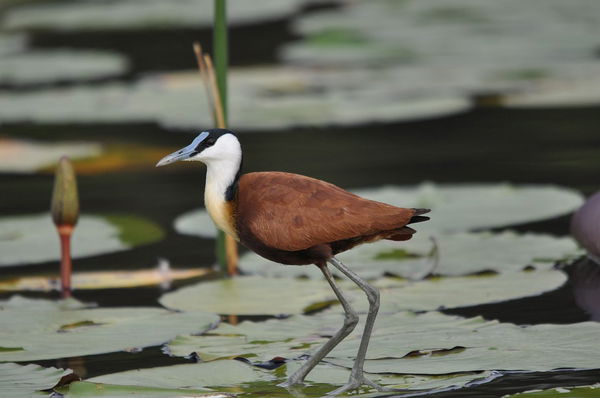
Photo: leonbasson
The Jacana is a unique and unusual bird found in wetlands and marshes throughout the tropics and subtropics of the Americas, Africa, and Asia. Jacanas are known for their long, thin toes with huge claws that allow them to walk on lily pads and other floating vegetation without sinking.
Jacanas are also notable for their striking plumage, which includes vibrant colors such as blue, green, and gold. These colors are more prominent in males, which also have a distinct crest on their heads.
Jacanas are omnivorous, feeding on a variety of insects, seeds, and small aquatic animals. They are also polyandrous, meaning that females mate with multiple males, who are responsible for building nests, incubating eggs, and caring for the young.
Despite their unique characteristics, jacanas are threatened by habitat loss and degradation, pollution, and hunting. Conservation efforts are needed to protect these fascinating birds and their wetland habitats.
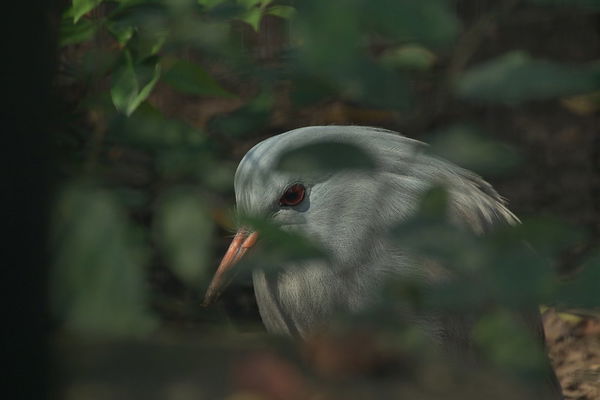
Photo: ar_ar_i_el
The kagu is a flightless bird that is endemic to the forests of New Caledonia, a group of islands in the southwest Pacific. Kagus are known for their striking appearance, with a grey body, white underbelly, and striking blue-grey feathers on their wings and tail.
Kagus are also notable for their distinctive calls, which sound like a cross between a whistle and a wail. They are omnivorous, feeding on a variety of insects, snails, worms, and fruits.
Kagus are considered endangered due to habitat loss and predation by introduced species such as rats and feral cats. Conservation efforts are underway to protect their remaining forest habitats and reduce the impact of these threats.
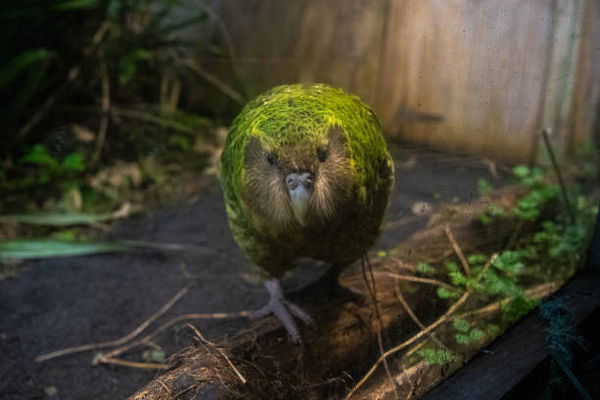
The kakapo is a flightless parrot native to New Zealand. It is one of the rarest birds in the world, with only around 200 individuals remaining.
Kakapos are known for their distinctive green and yellow plumage, large size, and friendly personalities. They are primarily nocturnal and herbivorous, feeding on a variety of plant materials including leaves, fruit, and bark.
Kakapos are critically endangered due to habitat loss, predation by introduced mammals, and disease. Conservation efforts are underway to protect and increase their populations, including habitat restoration and predator control programs.
The kakapo is a unique and important species, not only because of its rarity and ecological significance, but also because of its cultural importance to the indigenous Māori people of New Zealand.
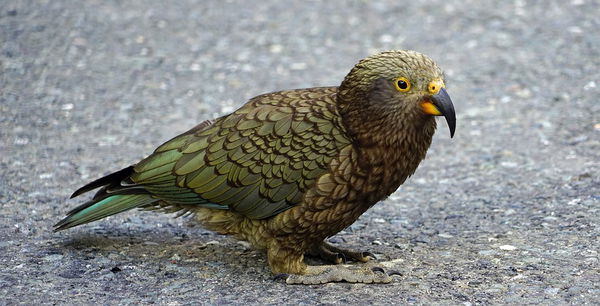
Photo: Barni1
The kea is a large, intelligent parrot native to the mountainous regions of New Zealand. It has olive-green feathers with a bright orange patch under its wings and a long, curved beak. Keas are known for their playful and mischievous nature, often stealing items from tourists and even damaging cars.
Keas are omnivores and feed on a variety of plant matter, insects, and small vertebrates. They are also known for their remarkable intelligence and problem-solving abilities, and have been observed using tools in the wild.
Unfortunately, the kea is listed as a vulnerable species due to habitat loss, predation by introduced predators, and human disturbance. Conservation efforts are focused on protecting their alpine habitats and controlling invasive predators like stoats and possums.
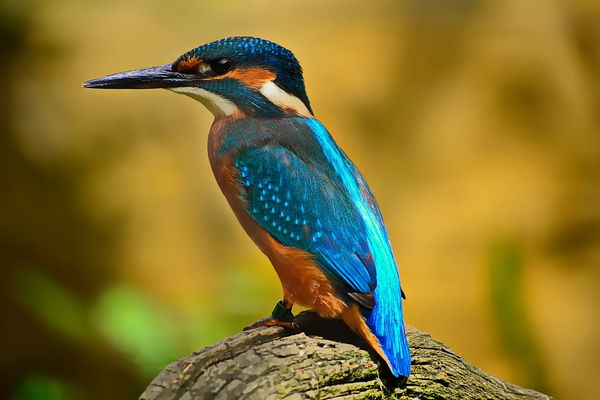
Photo: timoschluter
The kingfisher is a small, brightly colored bird found in many parts of the world, including Europe, Asia, Africa, and the Americas. They are known for their striking blue, green, and orange feathers, and their ability to dive into water to catch fish. Kingfishers have a unique anatomy that allows them to hunt underwater, including a long, sharp beak and webbed feet. They typically nest in burrows near bodies of water, such as rivers or lakes, and are territorial birds that will defend their nesting sites fiercely. Despite their small size, kingfishers are important indicators of ecosystem health, as they rely on clean, unpolluted waterways to survive.
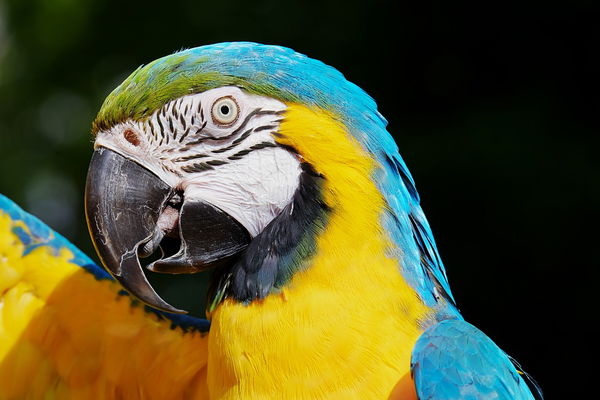
Photo: Couleur
The macaw, also known as the guacamayo in Spanish, is a brightly colored parrot that is native to the tropical regions of South and Central America. They are known for their vibrant plumage, which can feature a range of colors including red, blue, green, and yellow. Macaws are social birds and are often seen in large flocks.
Macaws are highly intelligent and can be trained to perform a variety of tricks and behaviors. They are also known for their impressive vocal abilities and can mimic human speech and other sounds. In the wild, macaws primarily feed on fruits, nuts, and seeds.
Unfortunately, macaws are threatened by habitat loss and the pet trade, with some species considered endangered. Conservation efforts are underway to protect and preserve these beautiful birds.
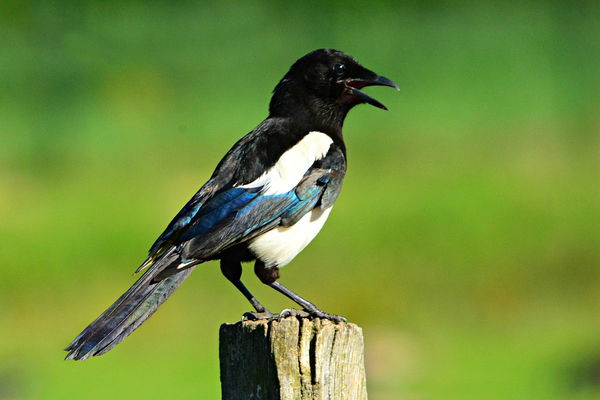
Photo: MabelAmber
The magpie is a black and white bird found throughout much of Europe and Asia. They are known for their striking appearance, with their black and white feathers and long, graduated tail. Magpies are intelligent and social birds, often living in large groups and communicating with a variety of calls and vocalizations. They are omnivorous and will eat a wide range of foods, including insects, small mammals, seeds, and fruit. Magpies are also known for their tendency to collect shiny objects, such as coins or pieces of glass, which they use to decorate their nests.
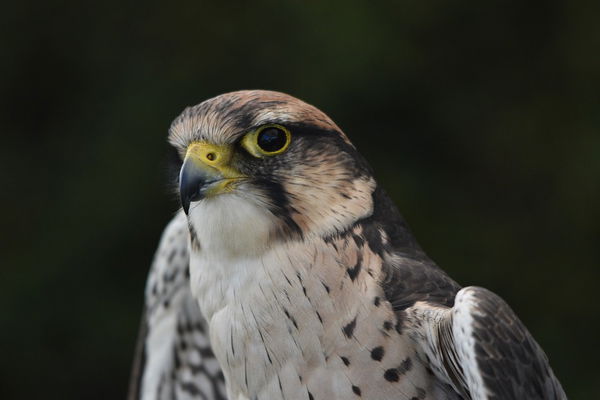
Photo: Garyuk31
The goshawk is a diurnal bird of prey that belongs to the Accipitridae family. It is native to Europe, Asia, and Africa and is characterized by a robust body, broad wings, and a short, rounded tail. Its plumage varies from brown to gray and white, with black spots on the wings and tail.
This species mainly feeds on small mammals, birds, and reptiles, which it hunts on the wing or from elevated perches. The goshawk is an agile and cunning hunter, moving quickly and precisely to catch its prey.

The ostrich is the largest living bird, native to Africa, and known for its distinctive appearance, with long legs and a long neck. They are flightless birds, but they are fast runners, capable of reaching speeds of up to 43 miles per hour.
Ostriches have two toes on each foot, with one toe having a long, sharp claw that they use for self-defense. They have a small head and a large body covered in soft, downy feathers, and they have long eyelashes to protect their eyes from the desert sand.
Ostriches are primarily herbivores, feeding on plants, seeds, and occasionally insects and small animals. They are also farmed for their meat, eggs, and feathers. Ostriches are social animals, living in groups or pairs, and they use a range of vocalizations to communicate with each other.
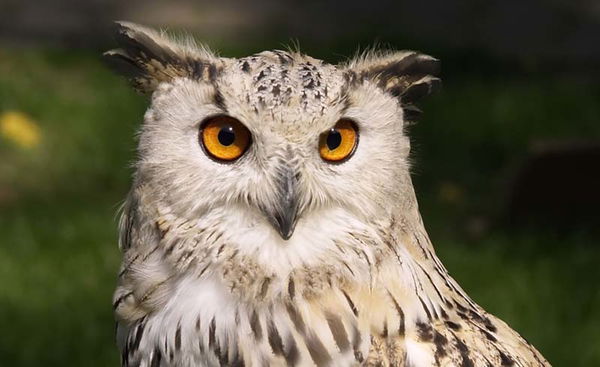
The owl is a nocturnal bird of prey found all over the world. There are many different species of owls, and each one has unique characteristics that make them fascinating and attractive to bird watchers and people in general.
The owl has a sturdy body and a large, round head. Their large, round eyes are adapted for night vision and their hearing is very acute, allowing them to detect prey in the darkness. Their soft, silent feathers allow them to fly without making noise, giving them an advantage when stalking their prey.
Owls are excellent predators and feed on a variety of prey, such as mice, rats, rabbits, fish, and other small animals. They often hunt at night and use their sharp talons to capture and kill their prey.
In many cultures, the owl is a symbol of wisdom and knowledge. Owls have been represented in literature and art for centuries and are a popular subject for tattoos and fashion designs.
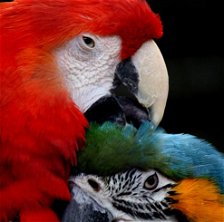
The parrot, also known as the psittacine, is a colorful, intelligent bird known for its ability to mimic sounds and speech. There are more than 350 species of parrots, found all over the world in a variety of habitats. They are social animals that live in flocks and communicate with each other using a range of vocalizations, body language, and even dance. Parrots are omnivores, feeding on a variety of foods including seeds, nuts, fruits, and insects. They are popular pets and can form strong bonds with their human caretakers. However, owning a parrot requires a lot of time, attention, and patience, as they can be demanding and require specialized care. Unfortunately, many parrot species are at risk due to habitat loss and poaching for the pet trade. Conservation efforts are underway to protect these intelligent and charismatic birds and their habitats.
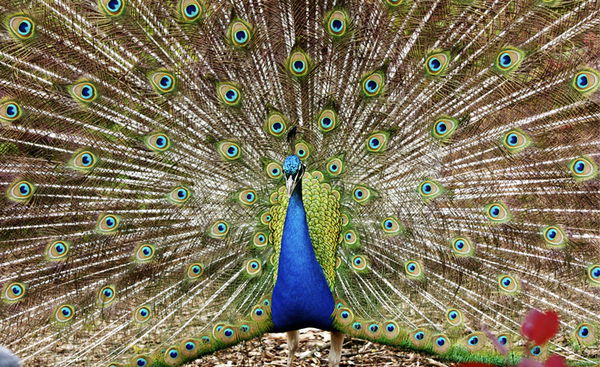
Photo: Neil Turner
The peacock is a magnificent bird native to South Asia, known for its striking appearance and extravagant plumage. The male, or peacock, has a vibrant blue and green iridescent body, a long tail of brilliantly colored feathers, and a crest of feathers on its head. Peacocks use their dazzling appearance to attract mates and intimidate rivals. While they are primarily ground-dwelling birds, they are also capable of short bursts of flight. The peacock is a symbol of beauty and pride in many cultures and is widely admired for its distinctive appearance.
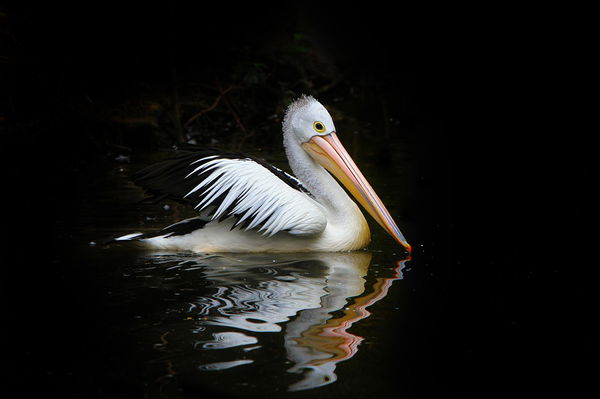
Photo: Holgi
The pelican is a large aquatic bird found in many parts of the world. They have a long beak with a large throat pouch used for catching and storing fish. Pelicans are strong fliers and can travel long distances in search of food. They are social birds and often hunt in groups, diving from the air into the water to catch fish. Pelicans are also known for their unique nesting habits, often creating large communal nests made of sticks and other materials. Pelican populations are generally stable, although they have been threatened by habitat loss and pollution in some areas.
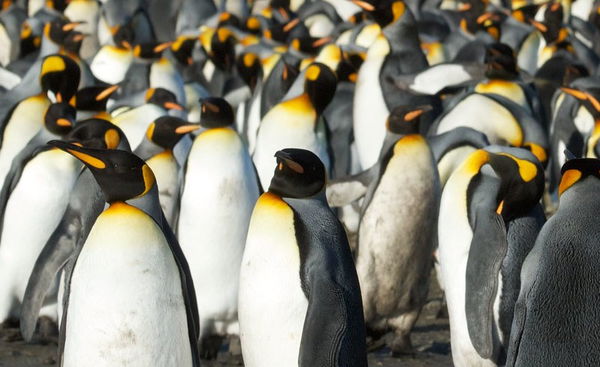
The penguin is a flightless bird that is native to the southern hemisphere, particularly Antarctica. They have a distinctive appearance, with their black and white feathers, a streamlined body, and a waddling gait. Penguins are well adapted to the harsh Antarctic climate, with a thick layer of blubber to keep them warm, and waterproof feathers that help them stay dry in the water.
They spend most of their lives at sea, feeding on fish, krill, and other small aquatic animals. Penguins are social animals, living in large colonies and communicating with each other through various vocalizations and body language. They mate for life and take turns caring for their young. The emperor penguin is the largest of all penguin species, standing up to 4 feet tall and weighing up to 80 pounds.
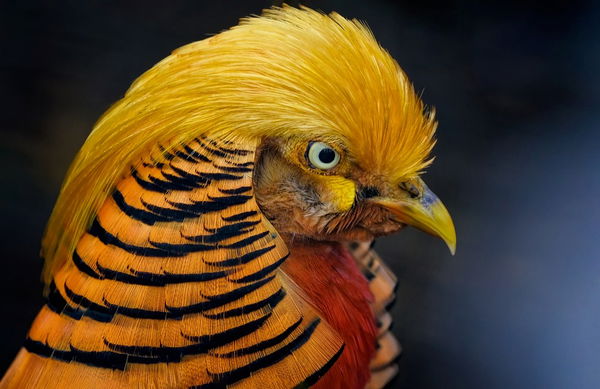
Photo: ambquinn
The pheasant is a galliform bird native to Asia, which has been introduced to many parts of the world due to its ornamental and hunting value. Pheasants are large and elegant birds, with a length of up to 90 cm and a weight of up to 3 kg. Males are larger than females and have much more showy plumage, with bright colors and complex patterns. Pheasants feed mainly on seeds, fruits, insects, and small animals.
The pheasant has been domesticated for thousands of years for hunting and is a popular bird in poultry farming. Due to their beauty and colorful plumage, they are also popular as ornamental birds in parks and gardens. However, hunting and habitat degradation have led to declines in pheasant populations in the wild. Several pheasant species are currently threatened with extinction and conservation efforts are underway to protect them. In some cultures, the pheasant also has symbolic value and is used in ceremonies and rituals.
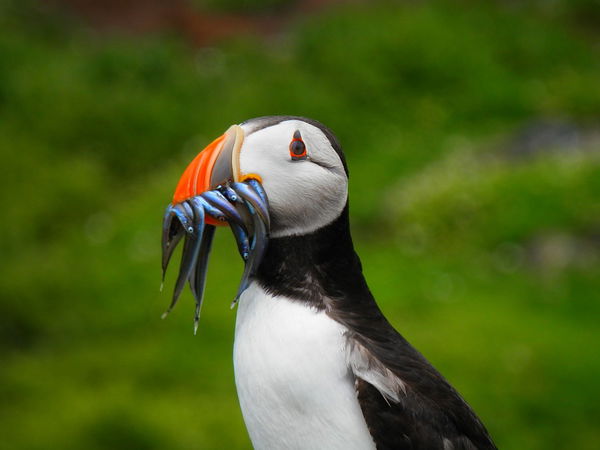
Photo: DesignFife
The puffin, also known as the "clown of the sea," is a distinctive bird that is found in the northern hemisphere. These small seabirds have a colorful beak that is particularly striking during breeding season, with shades of orange, yellow, and blue. Puffins are excellent swimmers and divers, using their wings to "fly" underwater in pursuit of small fish and other prey.
Puffins are also known for their unique nesting habits, with many breeding colonies located on steep cliffs or rocky islands. They dig burrows in the ground or use crevices in rocks to create a safe space for their young.
Unfortunately, puffin populations are declining due to habitat loss, pollution, and overfishing. Conservation efforts are underway to protect these charismatic birds and their breeding habitats.
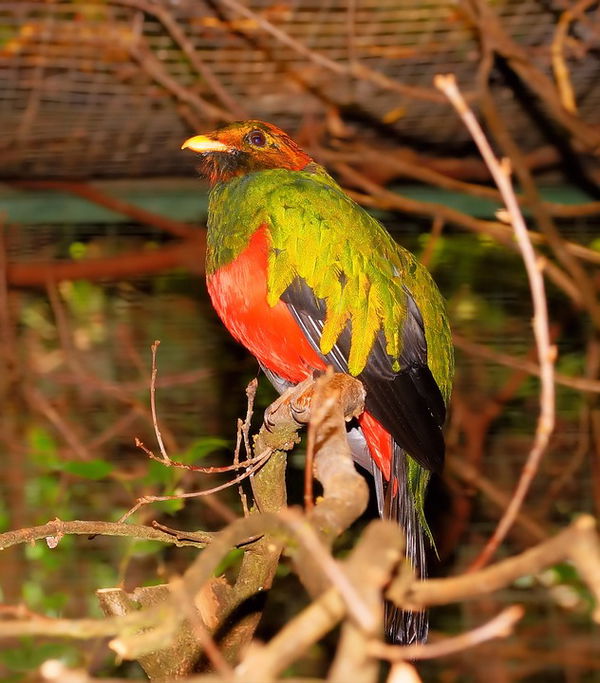
Photo: Kapa65
The quetzal is a colorful bird that inhabits the tropical rainforests of Central America, particularly in Guatemala, Costa Rica, and Panama. They are known for their distinctive long tail feathers, which can reach up to three feet in length. Quetzals have iridescent green and red plumage, with males having longer and more colorful feathers than females.
Quetzals are primarily frugivorous, feeding on a variety of fruits, including figs, avocados, and berries. They also eat insects, lizards, and small mammals. The breeding season for quetzals varies by location but generally occurs between February and July. During this time, males will display their vibrant feathers to attract mates.
The quetzal is considered a sacred bird in Mayan mythology and is a symbol of freedom and beauty. Unfortunately, quetzals are threatened by habitat loss due to deforestation and climate change. Conservation efforts are underway to protect the quetzal and its rainforest habitat.
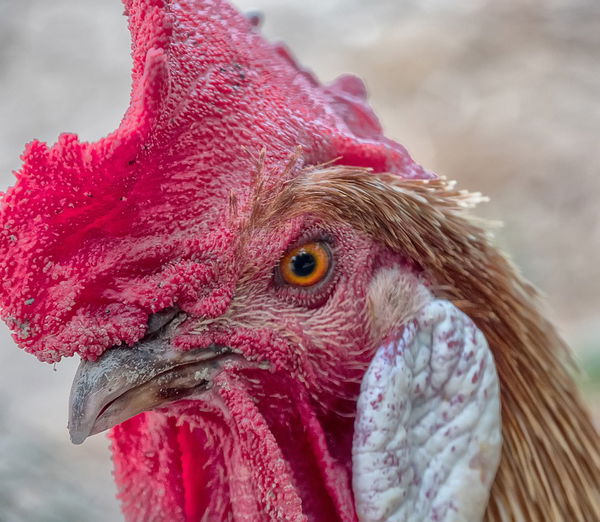
Photo: Karabo_Spain
The rooster, also known as the cock, is a common domesticated bird that is often raised for its meat and eggs. They are known for their distinctive crowing, which is used to mark their territory and communicate with other birds. Roosters are typically larger and more colorful than hens, with vibrant feathers and a prominent comb on their heads.
In addition to their practical uses, roosters also play an important role in many cultures and religions. They are often associated with fertility, courage, and power, and are featured in folklore and mythology around the world.
Despite their cultural significance, roosters can be aggressive and territorial, especially during mating season. It is important to handle them with care and caution, and to provide them with a safe and secure living environment.
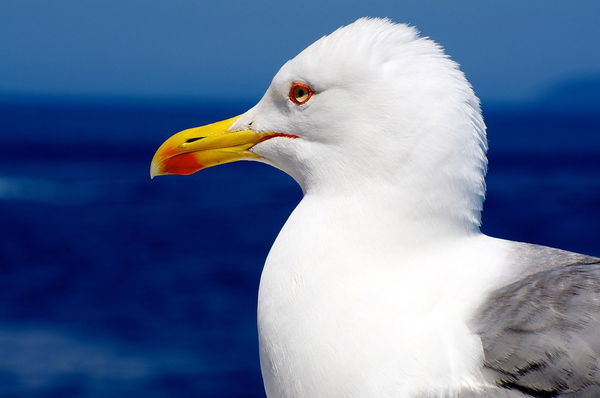
Photo: inboxvarie
The seagull, also known as the gull, is a seabird commonly found along coastlines and near bodies of water around the world. They are known for their distinctive cries, which can be heard as they soar through the air or gather in large groups on the shore.
Seagulls are opportunistic feeders, and their diet can vary widely depending on their location and the season. They primarily feed on fish, but will also consume insects, small mammals, and even garbage and food scraps left by humans.
Despite their reputation as scavengers, seagulls are graceful and intelligent birds that play an important role in marine ecosystems. They help control populations of small prey species and are often used as indicators of the health of coastal ecosystems.
However, seagulls can also be a nuisance to humans, especially in areas where they have become accustomed to scavenging for food. It is important to dispose of food waste properly and avoid feeding seagulls to prevent them from becoming dependent on human-provided food.
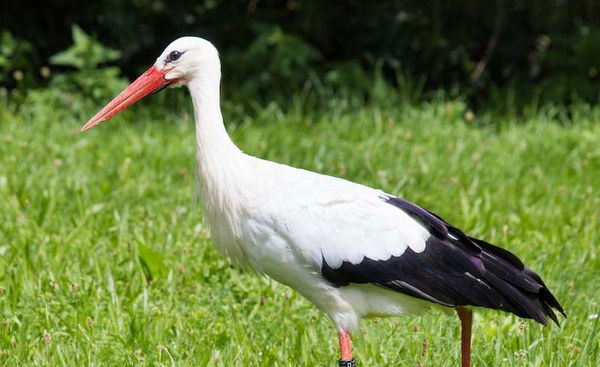
Photo: Pixabay
The stork is a migratory bird that inhabits much of the world, including Europe, Asia, and Africa. They are known for their long legs and neck, and their long, pointed bill. Storks are social birds and gather in large groups during migration. Additionally, they mainly feed on small animals such as insects, frogs, and snakes.
In many cultures, storks are symbols of good luck and prosperity, and are said to bring babies to homes. Storks are also important in nature conservation, as they are often used as an indicator of ecosystem health.

Photo: Hans
The sturgeon is a large, prehistoric-looking fish that can be found in freshwater and saltwater environments around the world. They are known for their elongated bodies, bony plates, and long snouts. Sturgeons can live for more than 100 years and grow to over 12 feet in length.
Sturgeons are highly valued for their caviar, which is a delicacy in many cultures. However, due to overfishing and habitat destruction, many sturgeon populations have been severely depleted.
Sturgeons feed on small fish and invertebrates, and play an important role in aquatic ecosystems. They are also an important cultural symbol in many indigenous communities.
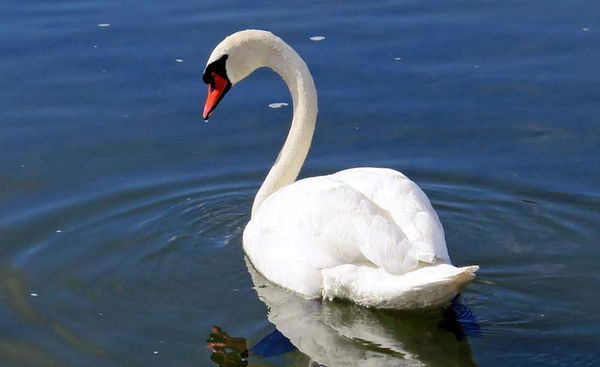
The swan is an aquatic bird that is known for its elegance and beauty. They are found worldwide, although they are more common in temperate regions of Europe and North America. Swans have a long, slender neck and are recognized by their white and black plumage. Additionally, swans have an impressive wingspan that can reach up to 2 meters wide.
Swans are monogamous animals and often mate for life. Additionally, they are migratory birds and can travel great distances during migration seasons.
In many cultures, the swan is a symbol of purity and elegance. Additionally, swans are a source of inspiration for many artists, and are a common element in literature and poetry.
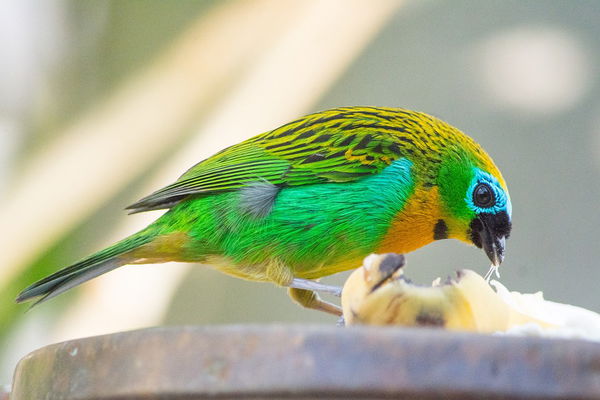
Photo: Gabrielvmrl2
The tanager is a brightly colored bird that is native to the Americas, from Alaska to Argentina. There are over 240 species of tanagers, each with its own unique coloration and pattern. They range in size from small, sparrow-sized birds to larger birds that are similar in size to a robin.
Tanagers are known for their brilliant plumage, which can range from fiery oranges and yellows to deep blues and greens. They are often found in forested areas and feed on a variety of insects and fruits. Many species of tanagers are migratory, traveling long distances each year between their breeding and wintering grounds.
Unfortunately, many species of tanagers are threatened by habitat loss and fragmentation, as well as by illegal trade in the pet industry. Conservation efforts are focused on protecting their habitats and reducing the demand for wild-caught birds in the pet trade.
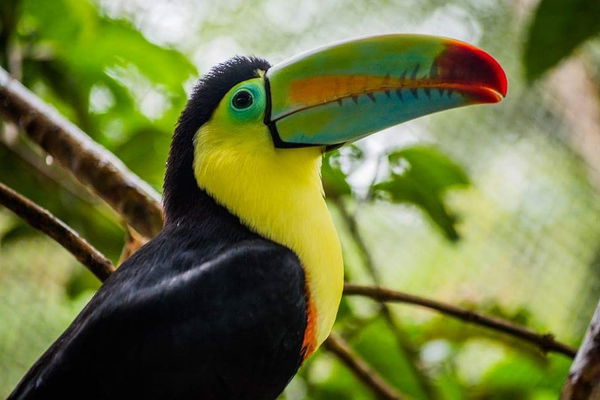
Photo: Mikesibaja93
The toucan is a brightly colored bird that is known for its large, distinctive bill. They are found in the tropical forests of Central and South America, where they feed on fruits and insects. Toucans are known for their striking appearance, with brightly colored feathers and a bill that can measure up to half the length of their body.
Toucans have a unique adaptation where their bill is made of a lightweight material called keratin, which allows them to use it as a tool to pluck fruits and catch insects. They are also important seed dispersers, as they consume large quantities of fruit and excrete the seeds over wide areas.
Toucans are social birds that live in small flocks, and they communicate with each other through a series of calls and gestures. They are threatened by habitat loss and hunting, and several species are listed as endangered by the International Union for Conservation of Nature (IUCN).

Photo: create219
The domesticated turkey is a large bird that is commonly raised for its meat. Native to North America, turkeys were first domesticated by indigenous peoples thousands of years ago. Today, they are raised on farms around the world, with the United States being the largest producer. Domesticated turkeys can weigh up to 40 pounds and are typically bred to have white feathers, although there are also brown-feathered varieties. They are primarily raised for their meat, which is a popular food during holidays like Thanksgiving and Christmas. In addition, turkey feathers are used in various crafts and decorations.
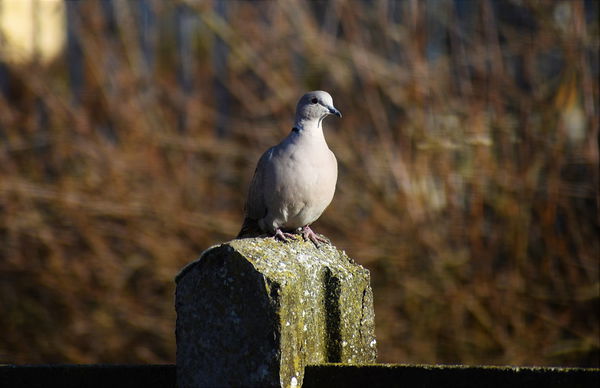
Photo: LauraMR5
The turtle dove, also known as the European turtle dove, is a medium-sized bird that is widespread across Europe, Asia, and Africa. It has a distinctive plumage of soft, beige-gray feathers with a black and white striped patch on its neck. The turtle dove is known for its gentle cooing call, which is often heard during the breeding season.
Turtle doves are migratory birds that spend their winters in Africa and return to Europe and Asia to breed during the spring and summer. They typically build their nests in trees or shrubs and lay two eggs per clutch. The young birds are fed on a diet of regurgitated seeds and insects.
Unfortunately, the turtle dove population has declined significantly in recent years due to habitat loss and hunting, and it is now listed as a vulnerable species. Conservation efforts are underway to protect and restore their habitat and reduce hunting pressure.
